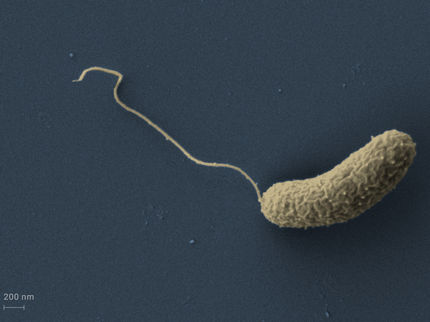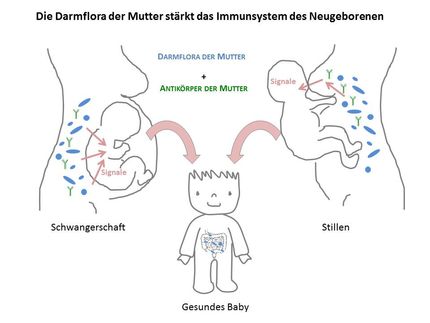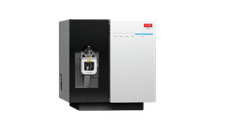Revealing the metabolic activity of microbial communities
Advertisement
microbial communities are performing important functions all around us – from the earth in our flowerpots to the human gut. Now researchers have developed a method for studying the metabolic functions of microbial communities in detail. It is now possible for the first time, thanks to a new algorithm developed at the UFZ, to use the incorporation of stable carbon isotopes into proteins to investigate natural remineralisation processes in much greater detail, to identify relevant key species and to study the way they interact in complex Decomposition processes. The new Protein-SIP technique makes it possible to measure carbon flux in microbial communities very accurately, say researchers from the Helmholtz Centre for Environmental Research (UFZ), the Max Planck Institute for Infection biology and the Universities of Oslo and Greifswald writing in Molecular and Cellular Proteomics. Although in the past it was possible to identify species with metabolic activity using DNA or RNA analyses, the new method can also identify carbon flux and therefore food chains within a microbial community. This means that it is now possible to analyse the interaction between individual groups of micro-organisms within a community.
News headlines like "Uncovering the genetic secrets of intestinal bacteria" and "Hand bacteria used to catch criminals" show that microbiologists all over the world are currently working hard to explore the world of bacteria living on and in the human body. The scope of potential applications is huge and could range from forensic medicine and simpler medical diagnosis to entirely new treatments. However, simply identifying the genes is not enough, because bacteria do not live on their own, but in large communities. "It's like a city with lots of people. Imagine a fire breaks out. Normally, fire-fighters would deal with it, but if there are no fire-fighters around, other people have to step in to prevent disaster," explains Dr Ingo Fetzer of the UFZ. "But who is responsible for what within these microbial communities? This is an important question that scientists are only just starting to investigate." And it is not just human gut flora that are at issue. Microbes are tiny organisms that, unseen by the human eye, control all the major biological processes on earth – from the global carbon cycle to the remineralisation of organic material and the breakdown of harmful substances.
The number of species of higher organisms on the planet is estimated to be between five and 100 million. There are only vague conjectures about the number of species of micro-organisms. This means that researchers have to concentrate on just a few species. So how is it possible to identify the key organisms within the microbial communities? In order to answer this question more easily, researchers at the Helmholtz Centre for Environmental Research combined the use of stable isotopes with protein measurements using mass spectrometry and bioinformatics.
In the new method, microbial communities are fed a carbon source containing the heavy, non-radioactive isotope 13C as well as normal carbon, 12C. Because they are stable isotopes, the method is also known as Stable Isotope Probing (SIP). Once the bacteria have consumed the isotope-marked substrate, the 13C atoms are incorporated into the bacterial proteins. The bacteria that make use of the substrate itself incorporate the 13C first. Other species of bacteria only make use of metabolites from the first group and incorporate less 13C into their proteins and do so later. For the analysis, the proteins of all the bacterial species from a sample are extracted and cut into specific fragments using the enzyme trypsin.
The fragments are analysed using a mass spectrometer to determine the amino acid sequence of the peptides. When compared with a genome database, this reveals a peptide's origin, i.e. the bacterium it comes from. In a second step, the researchers calculate the level of 13C incorporation. The 13C level then provides an elegant, direct and accurate measure of the metabolic activity of the species in question.
"We first tested this key technology in 2008 in a joint project conducted by two UFZ departments to analyse the metabolic activity of one specific species of bacteria within a mixed culture. We have been studying the structure and function of the microbial communities involved in the breakdown harmful substances for years. But it is only with the advent of the new mass spectrometers and their more accurate measurements that we have been able to achieve a breakthrough in developing the method," says project coordinator Dr Martin von Bergen from the Department of Proteomics.
Now it is possible to calculate the level of 13C incorporation into the peptides using the decimal places of the peptide masses. The researchers make use of the 0.0035 deviance in atomic mass units over and above the theoretically precise figure of 1.000 atomic mass units between 12C and 13C. Since there are more than 20 carbon atoms in a peptide, the decimal places are shifted over around 0.07 atomic mass units. Prof. Hauke Harms from the Department of Environmental Microbiology is very pleased with the new method: "Our new algorithm will make research work much easier in future. The method offers great potential for studying communities, which are at the heart of microbial ecology."
Original publication: Nico Jehmlich, Ingo Fetzer, Jana Seifert, Jens Mattow, Carsten Vogt, Hauke Harms, Bernd Thiede, Hans Hermann Richnow, Martin von Bergen, and Frank Schmidt ; "Decimal place slope: a fast and precise method for quantifying 13C incorporation levels for detecting the metabolic activity of microbial species"; Mol Cell Proteomics 2010.
Other news from the department science
These products might interest you
Most read news
More news from our other portals
See the theme worlds for related content
Topic World Mass Spectrometry
Mass spectrometry enables us to detect and identify molecules and reveal their structure. Whether in chemistry, biochemistry or forensics - mass spectrometry opens up unexpected insights into the composition of our world. Immerse yourself in the fascinating world of mass spectrometry!

Topic World Mass Spectrometry
Mass spectrometry enables us to detect and identify molecules and reveal their structure. Whether in chemistry, biochemistry or forensics - mass spectrometry opens up unexpected insights into the composition of our world. Immerse yourself in the fascinating world of mass spectrometry!


























































